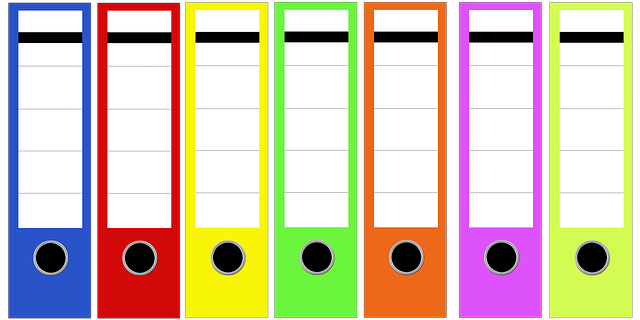Progressive Muscle Relaxation (PMR) is an effective stress relief technique that involves tensing and relaxing muscle groups systematically. By increasing awareness of physical tension, PMR helps individuals release stress, promoting calmness and reducing overall stress levels. It's a simple, accessible method for self-care and mindfulness, offering benefits like lower blood pressure, improved sleep, and enhanced relaxation when practiced regularly.
“Unwind and find inner peace with Progressive Muscle Relaxation (PMR), an effective stress relief technique. This powerful method systematically releases muscle tension, promoting a state of calm and reducing stress levels. In this article, we’ll explore PMR’s science-backed benefits for managing stress. You’ll discover how it works, step-by-step practices to incorporate into your routine, and its diverse advantages for enhancing overall well-being. Embrace a healthier, less stressed life with these simple yet profound stress relief techniques.”
Understanding Progressive Muscle Relaxation
Progressive muscle relaxation (PMR) is a powerful stress relief technique that involves systematically tensing and then relaxing different muscle groups in the body. By focusing on the contrast between tension and relaxation, PMR helps to calm the mind and reduce physical symptoms associated with stress. This method allows individuals to become more aware of their body’s response to stress and teaches them how to release tension intentionally.
As a simple yet effective practice, PMR can be easily incorporated into daily routines. It starts by tensing each muscle group for a few seconds while breathing deeply, followed by a period of relaxation where you notice the difference between the tension and its absence. This process is repeated across various parts of the body, from the feet up to the face, helping to unwind and promote a sense of tranquility. Regular practice of PMR can significantly enhance one’s ability to manage stress and improve overall well-being.
How PMR Works for Stress Reduction
Progressive muscle relaxation (PMR) is a powerful tool in the arsenal of stress relief techniques. It works by systematically tensing and then relaxing different muscle groups in the body, fostering a deep state of calm. This method enhances awareness of physical sensations, helping to identify and release tension that often accompanies stress. By repeatedly engaging in PMR, individuals can train their bodies and minds to respond more effectively to stressful situations, ultimately reducing overall stress levels.
The process begins with focusing on the feet and gradually moving up to the face and head. During each step, you tightly contract the muscles for a few seconds before fully releasing them. This contrasting sequence of tension and relaxation signals the body to let go of built-up stress and promotes a sense of tranquility. PMR is accessible to everyone and can be practiced almost anywhere, making it an excellent choice for those seeking natural stress relief techniques that empower self-care and mindfulness.
Step-by-Step Guide to Practicing PMR
To practice Progressive Muscle Relaxation (PMR), start by finding a quiet, comfortable space where you won’t be disturbed. Sit or lie down in a position that allows your body to relax easily. Begin by closing your eyes and taking a few deep breaths. Inhale through your nose for a count of four, hold for a count of seven, and exhale through your mouth for a count of eight. This helps calm your mind and prepare your body.
Next, focus on tensing and relaxing different muscle groups in your body systematically. Start with your feet and work your way up to your face. Tense each group for around five seconds by squeezing or tightening the muscles as tightly as you can comfortably bear. Then, release the tension and allow those muscles to relax completely for at least 30 seconds. Notice the contrast between the tightness and relaxation, letting go of any residual stress in that area. Repeat this process until you’ve gone through all muscle groups, ensuring each is fully relaxed after tensing. This step-by-step approach aids in systematic stress release, making PMR an effective stress relief technique.
Benefits and Incorporating PMR into Daily Life
Progressive muscle relaxation (PMR) is an effective stress relief technique that offers numerous benefits for mental and physical well-being. By systematically tensing and relaxing different muscle groups, PMR helps to reduce muscle tension and promote a state of profound calmness. This technique has been shown to lower blood pressure, improve sleep quality, and enhance overall relaxation, making it a valuable tool in managing stress.
Incorporating PMR into daily life is easier than you might think. You can practice it during short breaks at work, before bedtime, or even during moments of quiet reflection. Starting with simple exercises focusing on specific muscle groups like your hands and feet, you can gradually expand to larger areas such as legs, arms, shoulders, and finally, the entire body. Regular practice of PMR not only enhances stress relief but also builds awareness of bodily sensations, helping individuals to better recognize and manage tension in their daily lives.
Progressive muscle relaxation (PMR) is a powerful, yet simple stress relief technique that can effectively reduce tension and promote calmness. By systematically tensing and relaxing different muscle groups, PMR helps individuals connect with their body’s physical responses to stress, allowing them to gain better control over their overall well-being. Incorporating this practice into daily life can significantly enhance stress management and improve overall quality of life.
